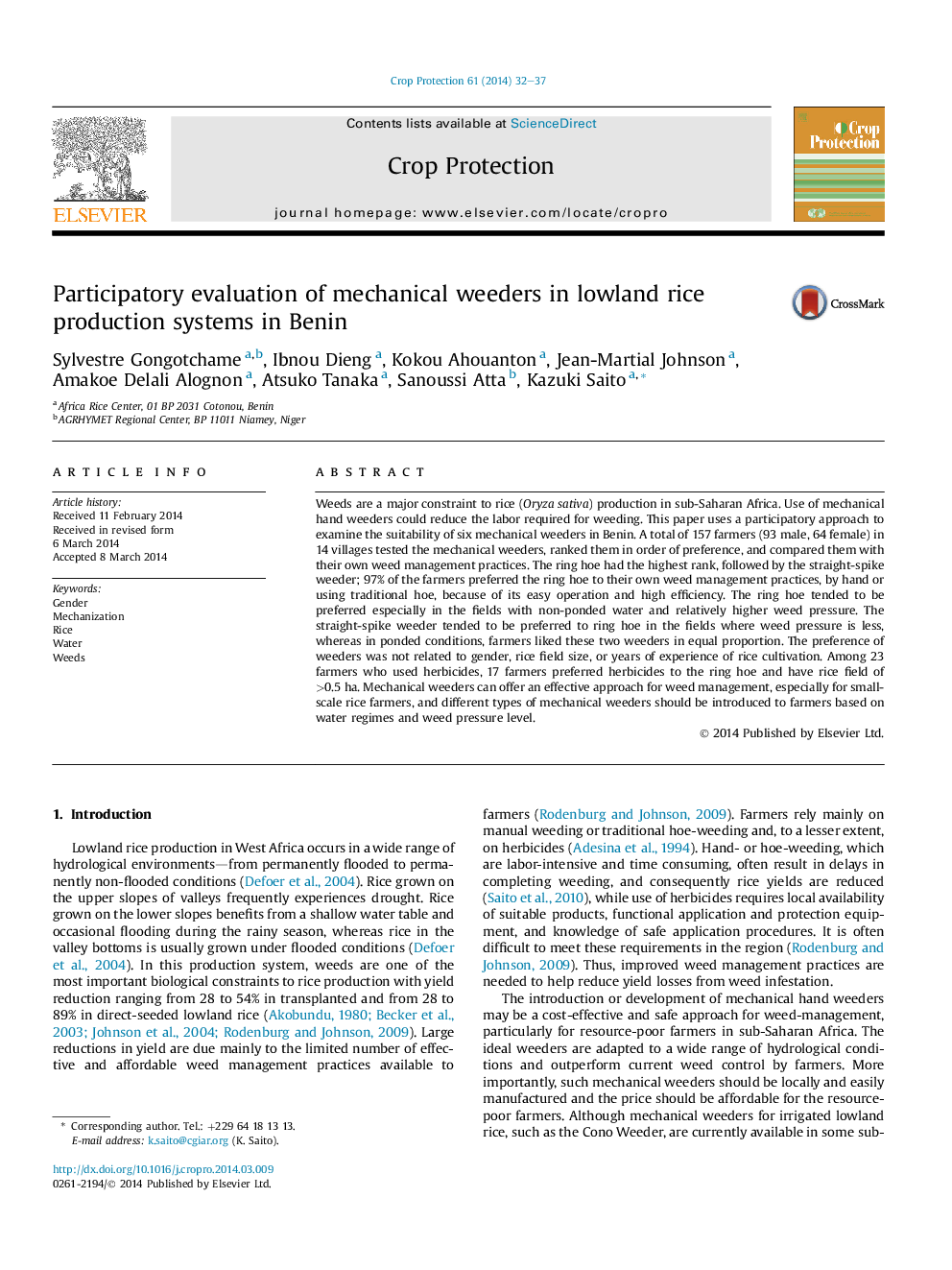| Article ID | Journal | Published Year | Pages | File Type |
|---|---|---|---|---|
| 4505904 | Crop Protection | 2014 | 6 Pages |
•Among six mechanical weeders, the lightest ring hoe was preferred by farmers.•Preference was not related to gender, field size, and years of experience in rice.•Ring hoe was preferred in fields with non-ponded water and high weed infestation.•Farmers who currently apply herbicide, preferred herbicide use to ring hoe.
Weeds are a major constraint to rice (Oryza sativa) production in sub-Saharan Africa. Use of mechanical hand weeders could reduce the labor required for weeding. This paper uses a participatory approach to examine the suitability of six mechanical weeders in Benin. A total of 157 farmers (93 male, 64 female) in 14 villages tested the mechanical weeders, ranked them in order of preference, and compared them with their own weed management practices. The ring hoe had the highest rank, followed by the straight-spike weeder; 97% of the farmers preferred the ring hoe to their own weed management practices, by hand or using traditional hoe, because of its easy operation and high efficiency. The ring hoe tended to be preferred especially in the fields with non-ponded water and relatively higher weed pressure. The straight-spike weeder tended to be preferred to ring hoe in the fields where weed pressure is less, whereas in ponded conditions, farmers liked these two weeders in equal proportion. The preference of weeders was not related to gender, rice field size, or years of experience of rice cultivation. Among 23 farmers who used herbicides, 17 farmers preferred herbicides to the ring hoe and have rice field of >0.5 ha. Mechanical weeders can offer an effective approach for weed management, especially for small-scale rice farmers, and different types of mechanical weeders should be introduced to farmers based on water regimes and weed pressure level.
